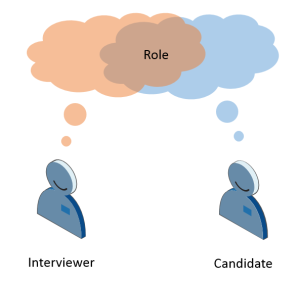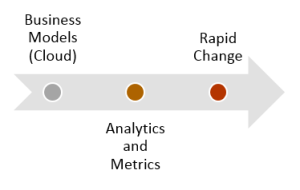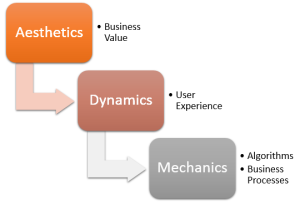When I first looked for software development jobs after leaving university, most employers were looking for candidates with the right attitude, right aptitude and good marks. However, as the years passed and my positions were increasingly senior, I found employers wanted the right person for the role, not just someone with the right skills. Having recently left Symantec (where I spent almost 13 years), waded through the employment jungle (as one of my peers called it) and started a new job, I wanted to capture my experiences and observations. Hopefully this applies beyond just software architect and software development roles in Sydney, Australia.
Recruiters

Many have negative opinions of recruiters and employment agencies. They try to provide candidates from the limited pool they can attract for clients whose requirements they sometimes do not fully understand. However, such an opinion is unconstructive and unfair. Many recruiters work long hours to fill roles whose remuneration sometimes dwarfs the recruiter’s in a rapidly changing technology and business landscape. Instead, consider the following:
Recruiters are paid by employers so candidates are the product, not the customer. Recruiters are very interested in candidates while applying and going through interviews and work hard to sell positions to candidates and candidates to employers. Rejected candidates are rarely worth recruiters’ time (“no news” is generally “bad news”) while successful candidates are pursued, particularly for recurring contract roles.
Recruiters find candidates for positions not positions for candidates. Candidates are responsible for finding their next job, not recruiters. Candidates need to market themselves (such as joining job search sites, talking to hiring managers, attending conferences and user groups), generate as many good leads as possible (such as applying for jobs and distributing their resume), following up the leads, understand the employer needs (such as emphasizing particular skills on a customized resume) then sell themselves in interviews. This process changes over time, as the candidate learns and the market changes, and recruiters and employment agencies are one part of the process.
Preparation

Start working toward the next job or promotion now, even for those happy with their current position. Why now? Because you cannot control when new job opportunities will arise or when your current position may end or change for the worse. Starting now means you will be prepared.
For example, identify activities that look good on a resume or will help for that next promotion, even if they are not immediately appealing. Plan conversations in advance, such as introducing yourself to peers at networking events, thinking of an insightful question for the boss’s boss and answering the inevitable “Why do you think you would be the right person for X?”
Start networking with people that could help you find a job in the future, such as peers and managers within the industry or related industries. Many are put off by the time commitments others recommend but simply reaching out, getting contact details and occasionally (once every few months) commenting on a post or tweet is usually more than sufficient. Aim for mutually beneficial relationships but realize peoples’ needs change overtime. Beyond getting the next role, it also gives context across the industry, identifies the skill level of peers, the challenges they solve and gaps in your own skills.
Create an online presence. It can be as simple as a LinkedIn profile that lists your employment history, important projects and key skills (and is a great way to keep your resume up-to-date). It can be as complex as a lengthy blog, strong social networking presence, a high Stack Overflow reputation and contributions to multiple open source projects. Start small, work up and do not be afraid to experiment.
Some fear others will infer the worst from making achievements visible – Dunning-Kruger is rife in software development – but being able to answer an interview question thoroughly because it was the topic of your recent blog post or pointing to your project on Git Hub when asked about a library or framework is invaluable. Unless you are aiming for a thought leadership position, most people simply do not care enough to discover other’s mistakes and having a demonstrable history is better than not, all other things being equal.
Some are deterred by the implicit pressure to maintain a blog or social networking activity. While thought leadership is may be best maintained by a steady stream of content, a different strategy is to post or blog fewer but better articles and content. A small number of insightful, relevant articles can be more useful than a regular stream of retweets, for example, because the articles show original work. This reduces the time commitment and interviewers will see better articles when they browse your content, too.
Be open minded. What you think you need may not be what you actually need and the people you think you should be talking to may not be who you should actually be talking to. Talking to those outside software development can be insightful and there are always things to learn and different perspectives to respect. Do not neglect soft skills, either.
Focus the resume. Customize it for the role to emphasize relevant skills. Write a cover letter but do not expect anyone to read it.
Interviews

Employers and interviewers come with their own preconceptions. They have their own backgrounds and experiences, their immediate need for a new hire and their vision of a suitable candidate for the role. This leads many interviewers to grill the candidate about the candidate’s fit for the interviewer’s idea of the role, to see if the candidate “fits in the box”.
The “box” approach works well for software development roles where the programming languages and frameworks are known but interviewer skills vary. Bad technical interviews fixate on minutiae under the misplaced assumption good software developers will have touched those areas. Good technical interviews involve writing code, explaining technical concepts or defending decisions.
However, candidates with broad or unusual experiences may not easily fit the box, encouraging interviewers to label candidates (“Are you an X or Y? You cannot be both!”). Finding a candidate that fits a box is less successful the more senior the role gets, particularly for leadership roles like management and software architect positions, where strategic and broader thinking is required, because people the box approach prefers are less likely to have new ideas and different perspectives.
Understanding the interview strategy can help the candidate identify the sincerity of the role. For example, is the role being advertised as a technical leadership role, like a software architect position, but they are conducting a “box” style interview? This hints at an impressive title being used to attract people for an otherwise straight coding job. Alternatively, a software development role containing lots of open questions may hint at a more senior role or a higher expected standard of candidate.
Moreover, what many interviewers forget is interviews are as much about the interviewer as the candidate. Even without asking questions, the candidate learns about the types of problems the interviewer thinks are important, their priorities and the interviewer’s communication skills. Is the interviewer asking questions about challenges you are interested in or have experience with? Is it something you enjoy talking about? Are they happy with high level answers or do they want detail? How did they react to your last answer? Did they ask for clarification or move to the next question on the list?
The usual recommendations about interview preparation apply. For software development and particularly software architect roles, understand your last few projects, the important design decisions and why they were made. Have scenarios prepared for behavioral questions on leadership, dealing with difficult stakeholders or working under pressure. Focus on the interviewer’s business first and talk about the candidate’s benefits at the end. Good questions for the interviewer include questions about how to be successful in this role and what challenges do they expect to face but do not be afraid to ask questions throughout they interview if they are relevant at the time.
Final Thoughts
Much is written about things candidates can do to improve their chances of finding a job, like resume writing or interview practice. However, a key part is patience. All the hard work will help you if and only if the job you want is available – the Australian IT employment market hibernates over summer, for example. Some people often need a new job due to financial or other pressures and, by all means, adapt to the market’s needs but getting a new role does not have to be a question of choosing what to sacrifice. Be good at what you do, have faith in yourself and the jungle will not seem so bad.

 The term “corporate politics” conjures up images of sycophantic, self-serving behavior like boot-licking and backstabbing. However, to some IT professionals’ chagrin, we work with humans as much as computers. Dismissing humans is dismissing part of the job.
The term “corporate politics” conjures up images of sycophantic, self-serving behavior like boot-licking and backstabbing. However, to some IT professionals’ chagrin, we work with humans as much as computers. Dismissing humans is dismissing part of the job. I recently read
I recently read  Many organizations adopt
Many organizations adopt 






